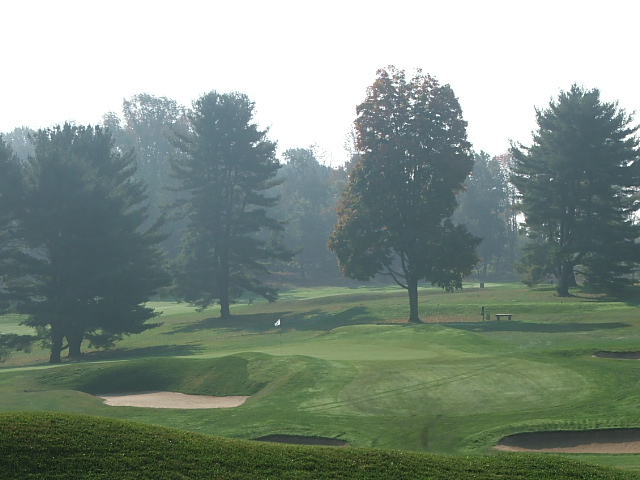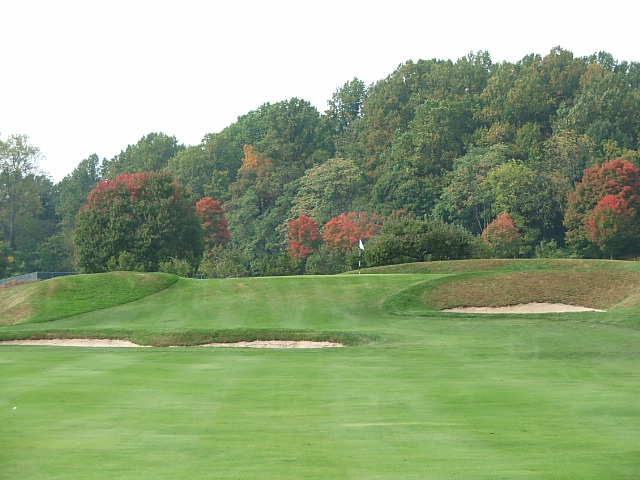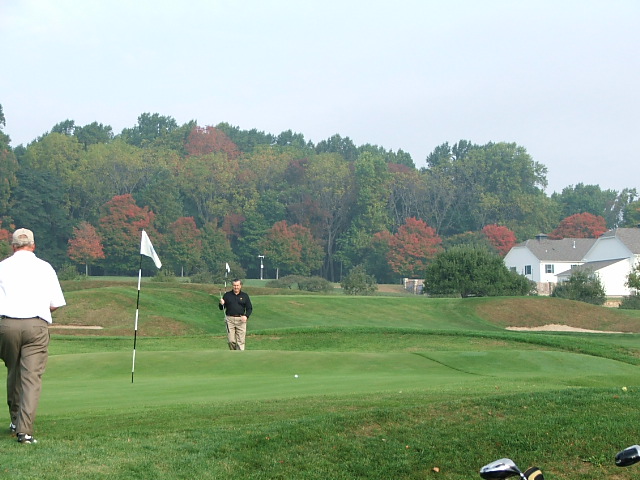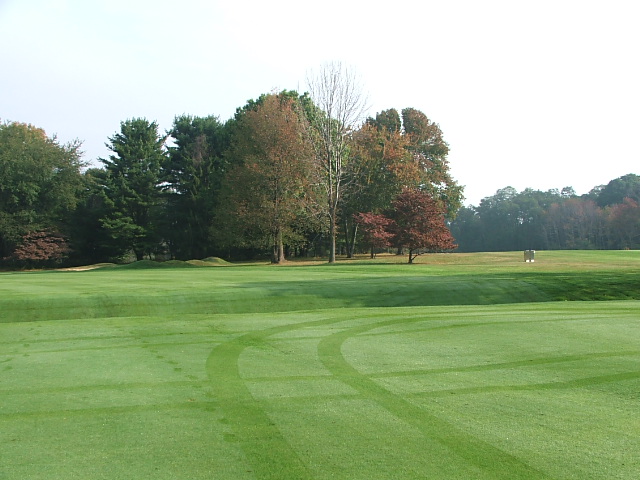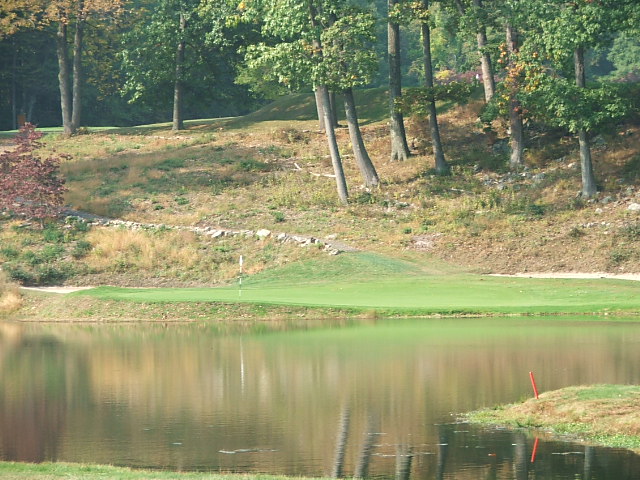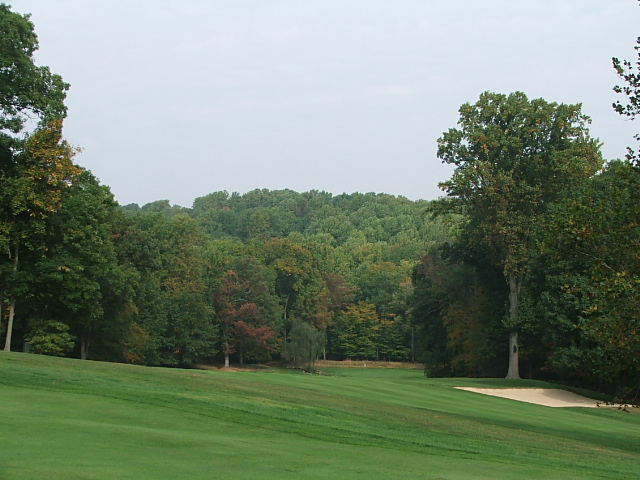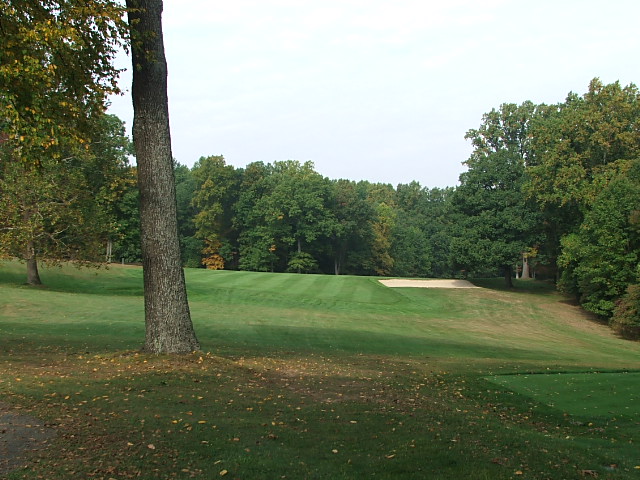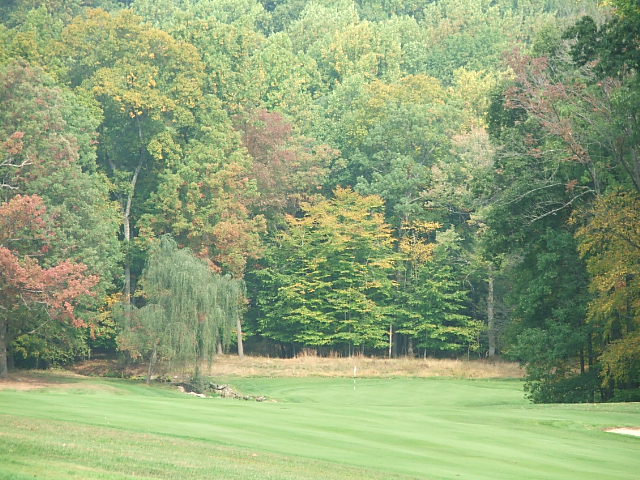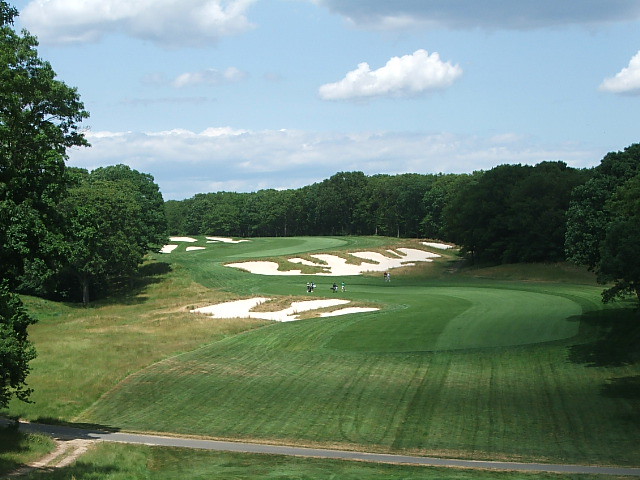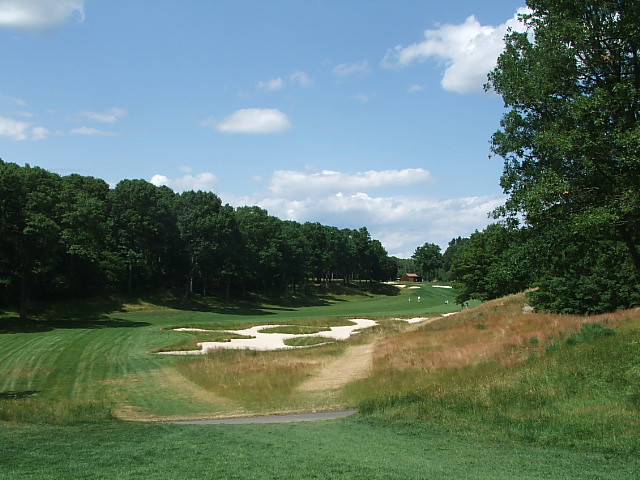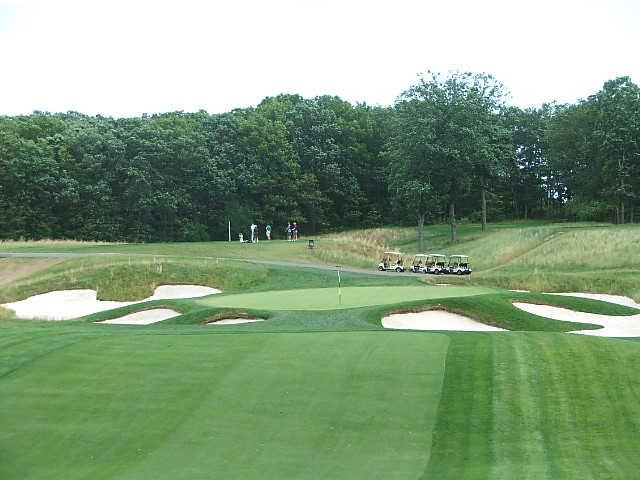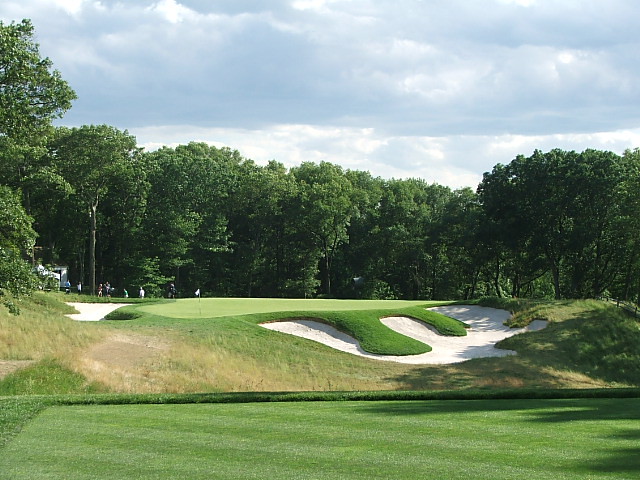How to lower your golf handicap
It is said that golf is good for business, and many deals are struck over an amiable game. However, to be more in control of a situation, executives often turn to private trainers to help them lower the golf handicap if one actually exists. Playing naturally and with pleasure is good for health, well-being and business at the same time. If you find it difficult to lower your golf handicap during the classes, you can very well continue to practice in the privacy of your backyard. After all, you just need to swing and take some short shots around fifteen minutes a day in order to lower your golf handicap.
For instance it is essential to go further than simply hitting the green; you will actually have to take a shot at a par or a birdie. This is the part where most of you need to lower your golf handicap. You need to learn how to target a specific area of the green with precision. Here are the main tips to lower your golf handicap for short shots. First try to open your stance slowly, then, keep the feet close together and flex the knees more than usual. This should lead to a compact swing and a good scoring. Apply them and actually lower your golf handicap.
A tip here to help you lower your golf handicap is to practice the body swing while sitting on a chair, since you thus prevent the hip movement that most often ruins the shot. All kinds of clubs are good to practice this move; as you get more familiar with them, you will definitely lower your golf handicap and gain self-confidence. It is a good idea to have a look at professional players and analyze their moves technically, thus you’ll understand the logic behind the perfect shot.
Tiger Woods moving on up, Greg Norman selling out. Also, how to get out of hardpan sand and putting tips
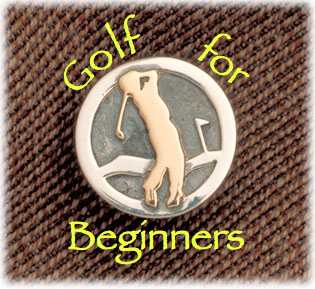
Click here to listen.
The world's most affluent zip code has been getting a workout as of late. Tiger Woods is flattening existing edifices on his estate, replacing the original mansion and assorted other buildings, with updated but "quite modest" appointments.
Approved plans include a 10,000 square foot dream house, a guard house, small golf course, pool and other amenities necessary to the enjoyment of the world's richest PGA Tour golfer and family. Famous neighbor Celine Dion won't be angry with the constant commotion as she began building her new digs earlier this year.
Not to be outdone by Tiger Woods, Greg Norman is seeking $65 million for his home on Jupiter Island after a messy break-up to his estranged wife. Originally purchased for $5 million sixteen years ago, the Shark is looking to make a real estate killing. Always the saavy businessman, Norman realizes that the elite will pay BIG to live near the greatest golfer on the planet (Jupiter?).
The rich just keep getting richer. But just how much is too much?
The cold weather has not put a damper on our golf activity but we must remember the importance of playing smarter and considering every shot. For example, Barry found himself in a sand trap that had frozen over. Golf for Beginners discusses the correct way to exit this trap the very first time. We also talk about an easy way to visualize your putting line.
Send your golf questions and comments to golfforbeginners@aol.com.
Subscribe to our weekly podcast through this RSS feed:http://feeds.feedburner.com/golfforbeginners or through iTunes.
Nextel/Sprint cell customers type http://www.mymbn.com/podcast/ in your browser and click on "sports casts". Our station number is 1955.
"Shiny Tech" courtesy of Kevin MacLeod (incompetech.com)"
This podcast is supported by Arizona Golf Packages and Florida Golf Travel.
This podcast is supported by New Roc Harley Davidson, your worldwide parts and accessories distributor. Great rides start here!.
Somerset Hills Country Club

Many people form their impression of New Jersey based on driving down the New Jersey Turnpike after leaving New York City or arriving at Newark Airport. The impression is not a pretty one with the unsightly Pulaski Skyway, industrial wastelands, refineries, landfills and a generally miserable look to that area.
The reality of New Jersey can be quite different than the first impression, particularly as you get away from the Turnpike. Somerset Hills is located about forty minutes west of Manhattan in an affluent part of the state, in the town of Bernardsville. The Bernardsville-Basking Ridge-Far Hills area is New Jersey's equivalent of Greenwich or of Manhattan's Upper East Side. This is horse country, made up of gently rolling terrain and sprinkled with mansions made from Wall Street and pharmaceutical fortunes. Jacqueline Kennedy Onassis and Meryl Streep were one time residents of Bernardsville. The area is also home to the U.S. Equestrian Team and the U.S.G.A. The course takes its name from the name of the county it is located in. The club's logo incorporates the crest of the (English) Duke of Somerset. Given its proximity to the U.S.G.A., located about ten minutes away, and its storied place in the game, Somerset Hills has a long-standing tradition of letting executives from Golf House play the course. For the rest of us, we have to be invited by a member.
Somerset Hills represents the type of club that I like very much. It is old, traditional and conservative. It reminded me of Myopia Hunt Club in Massachusetts with its original, reassuring and discrete clubhouse and civilized and understated approach to everything. In other words, it is the antithesis of the nearby Trump debacle, which is overdone, tacky, ostentatious, crass, coarse and over-engineered in its need to show how impressive it is. At Somerset Hills, they don't have to try to impress, because they are the genuine article. The small clubhouse, pro shop and outdoor deck fit perfectly into the landscape and have a patina that can't be bought and only develops with age and a respect for the past. The course has two perfectly manicured grass tennis courts, confirming its gentrified and genteel approach as a private club.
The Golf Course
The golf course at Somerset Hills Country Club (ranked a beguiling #69 in the world) was built by A.W. Tillinghast in 1917. Part of the course was carved out of a former racetrack. A par 71, Somerset Hills plays to a total yardage of 6,659 and a slope rating of 132. As was Tillinghast's tradition, each of the holes at Somerset Hills was given a name by the architect.
#2 Redan - hard start to the round
Tillinghast went with the 'difficult start' philosophy at Somerset Hills. The first hole, "Orchard" plays through an old orchard and is a very testing 448 yard par four that doglegs to the right. The second hole is a classic "Redan" hole, seen above, and it's a beauty. At 175 yards it has all the classic elements of a Redan and it plays very difficult, even though it is rated as the #15 handicap hole.
Uphill approach to the 3rd green
The third hole, named "Bunker Hill", is a shortish, 378 yard par four that plays to an elevated green that is well protected by bunkers.
5th green with the big hump cutting across
The fifth hole, oddly enough named "Nairn" (I guess it reminded Tillinghast of the town in Scotland?) has a green design that Tillinghast used on several holes at Somerset Hills. As can be seen in the picture above, there is a very large hump running across the green. As a short course by modern standards, Somerset Hills is by no means an easy course. Part of the reason is green designs such as this, and also, very fast greens.
Old race-course running through the 6th hole
I liked the par five, sixth hole ("Plateau"), which has the outline of the old racetrack still running through the fairway. You can see where the track winded around the edge of the property, through the sixth and seventh ("Racetrack") fairways and where it turns at the end of the seventh fairway and heads back toward the clubhouse. You can see the big dip in the fairway in the picture above.
You can still imagine the races running through the 6th hole
Many thanks to my caddy for providing the proper perspective and sense of scale to this unique hazard. You can get a good feel in this picture of how Tillinghast used the racetrack to great effect. It was a brilliant design decision on his part.
Some courses have a front and back nine that are reasonably similar in feel and style. Somerset Hills does not. It has two distinctly different sets of nine. The front nine is relatively flat and plays on relatively open ground in the area where the former racetrack was situated. The back nine is set within the forest, has many tree-lined holes, and has much more change in elevation.
Approach to the 11th green
The eleventh hole, aptly named "Perfection", is rated as the #4 handicap hole at Somerset Hills, but in my book is clearly the most difficult hole on the course. It is a 412 yard par four that requires the golfer to hit his/her tee shot through a narrow chute of trees to a landing area that slopes left to right down a hill. Shots hit too far to the right are blocked out, leaving no approach to the green, so the tee shot requires precision and the appropriate position.
The hole is a sharp dog-leg to the right after the tee shot. The second shot plays from an uneven lie, over a creek, to a difficult, elevated and well-bunkered green.
 View from 11th green back up to clubhouse
View from 11th green back up to clubhouse In addition to being a difficult and brilliantly designed golf hole, the eleventh hole is also scenically beautiful. There is a pond left of the green and right of the green is a sharp hill that rises to the clubhouse and is covered in fescue (seen above).
#12 par three named "Despair,"
The next hole, a 151 yard par three named "Despair", shows off a design feature Tillinghast didn't use often, which is a green set within/around water. It requires a precise shot because the area you hit from is narrow and there are trees encroaching on the right side.
 #13 green
#13 green The thirteenth green, above, shows that even on relatively straight forward driving holes, there is no letup at Somerset Hills, given the big undulations used strategically by Tillinghast. This one looks like a wave rolling in from the sea.
The par four fifteenth hole, named, "Happy Valley," joins a small list of truly world-class holes that I have found in my travels playing these elite courses. See the entire list here. The 407 yard par four is seen from the tee below.
15th from tee "Happy Valley"
You can see the strategic options off the tee, which allows a player to hit safely to the left, or to choose a bolder line over the bunker and be rewarded by cutting off the corner of the dogleg and advancing the ball significantly down the hill toward the green.
15th hole sloping fairway
You can see the big left to right slope in the fairway as it plunges down the hill toward a small green protected by water in front and on the left side by both water and a weeping willow tree.
15th small green down in the valley
It's during this stretch of the course that I realized why I like Tillinghast routings like this one, Quaker Ridge and Baltimore Five Farms. There is so much change, variation, brilliant use of terrain and character to his routings that they just charm you into submission. I appreciate this type of layout more than a Winged Foot or Baltusrol where so much of the character and challenge is in the greens only.
Par three 16th "Deception" green
The back nine meanders through the hills. The fifteenth plays down the big sweeping hill. The next hole, the 170 yard par three sixteenth, is carved into the side of a hill. The hole after that, the seventeenth ("Quarry"), a par four with a blind tee shot over a hill, features a second shot down the hill to a tough green. The back nine has a set of holes that fit together like a glove and are as good as any you'll find.
The eighteenth is a short, 335 yard par four that plays up a big hill toward the clubhouse and is not that hard. It is the only hole that is worthy of the slightest bit of criticism on the back nine.
Getting everything right at a golf club is more art than science, but at Somerset Hills they have it all figured out. The small locker room and bar, the discrete, respectful staff and a refined approach to everything. Maybe it was hard for me to be objective playing here. As you can see from my pictures, I played it on such a nice fall day that the course really shined. I love to golf during the fall with its shorter days, crisp weather, diffused light, the sound of leaves crunching under your spikes and the sound of birds flying south (yes, I'm still a fan of Canadian Geese despite what they've done to Medinah). Since this was a home game for me I made it back home in time for dinner to appease my delightful wife who is becoming increasingly irascible about my golfing travels. I wonder why?
After having now played all of A.W. Tillinghast's courses, I would personally rank them in the following order: 1. San Francisco; 2. Somerset Hills; 3. Bethpage Black; 4. Baltimore (Five Farms); 5. Quaker Ridge; 6. Winged Foot (East); 7. Winged Foot (West); 8. Baltusrol (Lower).
Tiger Woods advice an about-face to Daly's "Golf My Own Damn Way". Also Ernie Els on reading your lie in a fairway bunker

Click here to listen.
While PGA Tour leader Tiger Woods and LPGA's number-one golfer Lorena Ochoa maintain a strict workout and practice regimen in order to achieve their highest goals, John Daly's offbeat approach of how to "Golf My Own Damn Way" relies on unconventional wisdom.
He claims he prepared for his Open win by downing ten chocolate-filled croissants. He also loves M&M's and ate twenty packets in a single round. Daly says that your belly is the key to a solid golf swing.
Could you imagine Tiger Woods utilizing this advice? Daly's book is like the Antichrist to Woods' book, "How I Play Golf".
Daly's approach to a solid golf score far from scientific but he does make some interesting points which might help the amateur. And, he's just plain funny. Golf for Beginners realizes that a happy demeanor during your round will offset the occasional poor shot and so this week's podcast is chock-full of golf tips from John Daly's new book.
This is golf's "silly season"...what did you expect?
On the serious side, we also discuss a tip from Ernie Els, found in the pages of Golf Digest Magazine. The fairway bunker offers many challenges because it's not necessarily a shot you regularly practice. This tip on how to correctly read your lie and select the appropriate golf club for the situation will take the guesswork out of your next bunker challenge.
Send your golf questions and comments to golfforbeginners@aol.com.
Subscribe to our weekly podcast through this RSS feed:http://feeds.feedburner.com/golfforbeginners or through iTunes.
Nextel/Sprint cell customers type http://www.mymbn.com/podcast/ in your browser and click on "sports casts". Our station number is 1955.
"Shiny Tech" courtesy of Kevin MacLeod (incompetech.com)"
This podcast is supported by Arizona Golf Packages and Florida Golf Travel.
This podcast is supported by New Roc Harley Davidson, your worldwide parts and accessories distributor. Great rides start here!.
The Key To Golf Mastery
by John J. Lynch
The key to golf mastery is simplicity.
Golf is actually really simple, but we insist on making it complicated. You can increase your understanding of any complex subject by progressing from the simple to the complex.
Take the fundamentals of a sound golf game and divide it into the following five parts and focus on these ONLY.
1. The grip. 2. The setup. 3. The back swing. 4. The down swing. 5. The short game (chipping, sand play, and putting)
Master each one of these parts, and becoming a scratch golfer will not be too difficult. By understanding the simple, you can understand the complex.
Becoming a scratch golfer is simple after you have arrived at it. But it is simple only when you know what IT is.
Nothing is simpler than greatness: for to be simple is to be great.
Divide your golf game into simple parts, master each part, and you will become a great golfer!
The hardest thing for golfers who have been playing for a long time is to change a bad habit. If your bad habit is you sway off the ball and you are working on swinging around a stable spine, this move will feel very different to you.
You may even think it is wrong because it feels so different...
In fact, there is a good chance that your golf game will suffer the next time you hit the course.
Most golfers revert back to their old bad habit because of ego, embarrassment, or whatever...
Don't fall into this trap...
"There is no room for God in him who is full of himself." -- Hasidic saying
These golfers will never get any better and will always stay on the same plateau they have been on for years.
Some golfers have been on the same plateau as far as golf skill level for 30 or even 40 years. If you are happy with the plateau you are on...
Fine.
However, if you truly are committed to reaching that next level in your golf game you need to go through the pain of learning the proper moves which will eventually eliminate the bad habits you have acquired over the years.
I know this is some bitter medicine for some of you to swallow.
I am NOT here to offer you a quick fix...
I'll leave that to the multitude of so called golf gurus out there to sell you their snake oil...
The road to mastery has many plateaus...
Learn to love these plateaus!
You will have to practice any new move in golf for 21 consecutive days before it becomes habit.
This biological fact has already been proven by kinesthetic scientists...
So accept it for crying out loud!!
If this new move causes a major change in your golf swing, I recommend only working on the new swing move and nothing else during this 21 day period.
Divide the complex into simple parts...
Master the simple and you will achieve greatness in your golf game!
Don't work on too many things at the same time, this will lead to paralysis by analysis.
If you decide you want to play golf during the period you are learning a new move...
Play golf!
Don't work on this new move on the course, dance with which you brought to the course...
You should only be thinking about getting the ball in the cup in the least amount of strokes...
Play golf...
Don't play golf swing!
Practice on the range or at home, not on the course.
If your scores and ball striking suffer while you are learning a new move in your swing, tell your self this simply means you are working toward the next level in your game and this is normal.
Have fun on the course!
Hit 'em Long & Straight!
John Lynch
About the Author
John Lynch is owner of How2MakeMoneyOnline.org and writes on a variety of subjects. To read more golf articles like this John recommends you visit: http://no1golfbookreviews.blogspot.com/
Pressure creates drama for Mickelson at HSBC Champions, high-tech golf instruction with K-Vest and Annika Sorenstam's tips off the tee

Click here to listen.
Phil Mickelson earned the title of "Champion of Champions" at the HSBC in China, narrowly defeating two Englishmen in a sudden death showdown.
Tiger Woods wasn't in attendance and so Mickelson could also be considered the "Best of the Rest Champion". Lefty's play was less-than solid but still good enough to defeat Lee Westwood who made as many cuts as there were events during the PGA Tour season, currently ranked 177th on the money list. Oh, and then there was Ross Fisher whose only experience on the PGA Tour this year was at the Open Championship where he m/c'd: his rank is 257th.
Still, this is a checkmark in the "win" column and Mickelson will have this memory to comfort him during his long winter's nap, along with the knowledge that a 76 was all that was needed to get him into a playoff.
This week on Golf for Beginners, we discuss how the pressures of the game can throw away a five-stroke lead, making even the top golfers in the world look amateurish. Mickelson had six penalty strokes in his final round and more golf balls found the water than the fairway.
We also talk about how new technology is helping golfers become their own instructors. In the past we reviewed the Suunto G6 watch, a great training aid for tempo and rhythm. We also assessed the RedEye i330 laser putter which forces your eyes to see the correct line on a putt.
This week the K-Vest is featured, techno-gear which gives a three-dimensional view of your golf swing and offers immediate feedback of your alignment and posture. This vest could be the wave of the future for golf instructors!
Annika Sorenstam says she has fully recovered from her spinal injuries. Even so, Sorenstam has been busy with other ventures including but not limited to course design and the new Annika Academy. Golf Magazine featured her tips on safe play off of the tee. We review these pointers querying when it is better to use a three-wood versus a driver off the tee.
Send your golf questions and comments to golfforbeginners@aol.com.
Subscribe to our weekly podcast through this RSS feed:http://feeds.feedburner.com/golfforbeginners or through iTunes. Nextel/Sprint cell customers type http://www.mymbn.com/podcast/ in your browser and click on "sports casts". Our station number is 1955.
"Shiny Tech" courtesy of Kevin MacLeod (incompetech.com)"
This podcast is supported by Arizona Golf Packages and Florida Golf Travel.
This podcast is supported by New Roc Harley Davidson, your worldwide parts and accessories distributor. Great rides start here!.
Winged Foot, Baltusrol and Bethpage
Before reviewing the New York area Tillinghast courses, I would point out that his best design might be one of his earliest efforts - San Francisco Golf Club. Tillinghast's major New York area courses are: Winged Foot West (ranked #18 in the world), Bethpage Black (ranked #30 in the world), Baltusrol Lower (ranked #45 in the world), Quaker Ridge (ranked #61 in the world), Winged Foot East (ranked #66 in the world), and Somerset Hills (ranked #69 in the world). Not surprisingly, Tillinghast did a lot of his work in the New York area since his practice was based in New York City and Englewood, New Jersey. Tillinghast was a legendary figure. He never went to college and used to walk around the course sites he was designing with a pistol and a bottle of booze.
 A.W. Tillinghast
A.W. Tillinghast Bethpage Black
The only public course of the six, Bethpage Black is the clearly superior of the New York area courses. It is built on the hilliest terrain of all his local courses and has the most variety. The 4th hole at Bethpage Black (pictured below) is a par five with three levels of elevation and is unquestionably one of the best in the world. A dog-leg left, you have to hit three good shots to get on the green. And you have to hit them to the appropriate side of the fairway, the right side being the more favorable coming in on your third shot. This great hole is immediately followed by the 5th hole, a very hard par four where you need to hit the ball a good 220 yards, albeit, downhill, to hit the fairway. Good luck if the wind is blowing at you as it was when I played. Your second shot plays very hard uphill. The beauty of the hole, among its visual splendor, is that the best shot off the tee should be played left to right and the best shot to the green should be played right to left.
The world-class par five 4th at Bethpage Black
The difficult 5th at Bethpage from the tee box
Bethpage doesn't have an easy (or a bad) hole on the course. Another beautiful example of Tillinghast's design style is the par four sixth which plays 408 yards from the back. The tee shot is blind and the second shot is down hill to this well protected, beautiful green guarded by a swale.
Bethpage Black's sixth green
Bethpage doesn't feature any par three's where you hit a short iron. The 161 yard par three fourteenth is as close as you'll get to an easy shot. If you consider a green this well bunkered easy, that is.
Bethpage Black's par three 14th hole
The fifteenth hole at Bethpage is a 470 yard par four that plays MUCH longer than the yardage indicates. It is not a terribly difficult fairway to hit, but the second shot plays as uphill as any shot you will ever play. It's almost straight up-hill. Definitely one of the hardest shots I have had to hit (and hit and hit) thus far playing the top 100. To give you some sense of scale, the green sits about four stories above the level of the fairway.
The exceedingly difficult 15th hole at Bethpage Black
I didn't experience any of the legendary waiting in line that the course is famous for. Nor did I have to sleep in my car the night before. I played with a friend who is a New York state resident and can book tee times up to a week in advance. I would comment that the Long Island male, though, is a unique breed. They are a cross between two distinct and not necessarily complimentary personality traits. Half the time charming, funny and entertaining and the other half in-your-face obnoxious. Staying to have a beer in the clubhouse after the round is mandatory so you can soak up the true attitude of the Long Island male in all his regal splendor. You will no doubt remember it.
Winged Foot
The opposite end of the universe from Bethpage from a social status standpoint is the Winged Foot Golf Club located above New York City in Westchester County. Along with St. Andrews, Pebble Beach and Pinehurst, it is an undisputed golf Mecca. When you turn off Mamaroneck road, Winged Foot has an impressive winding entry drive and a dramatic, beautiful clubhouse that sits in the middle of the site surrounded by tall trees. You know you are someplace special when you arrive at Winged Foot.

The fifth green at Winged Foot West
Winged Foot has perfected that uniquely American art of the country club. There is a ritualized process to everything about the club. You arrive and the caddie master takes your clubs out of your trunk and welcomes you. After you park, you go into the locker room where the attendant organizes a locker for you and offers to change your spikes if needed. While playing, he cleans your street shoes off. Next, your caddie awaits to guide you around the course. After the round, you enjoy some food and drink in the grill room where the elegant wooden boards proclaim the past winners of championships held at the course. You are served by employees that have perfected the art of service and making you feel at home. Winged Foot is known for being very generous with its employees, many of whom have been in long service at the club and are treated like family. When Henry Longhurst wrote "one of the great unpurchasable assets in any golf club is the continuity of staff", he must have been thinking of Winged Foot.

The entry drive at Winged Foot
Winged Foot is the only club with the distinction of having two courses ranked in the top 100. I played the East and West courses at Winged Foot on different days and at different times of the year: The West on a brilliant summer day. The East on a cool, drizzly, fall day. Both times I very much enjoyed sitting around the clubhouse, the first time on the outdoor patio, under the awning, with its signature green-and-white stripes near the 18th green, at the end of a great day's golf. The second time, in front of the over-sized fireplace in the grill room with the fire crackling as the outside temperature dropped and a slight drizzle was falling. Sitting in that room with the dark woods and rich tones is a nice way to take the chill off and savor the overall Winged Foot experience.

Winged Foot Clubhouse
Despite the grandeur and majesty of the club, however, I would not rank the West Course at Winged Foot as one of my personal favorites. After the round as I tried to think back about the holes, many of them blend together as being tree-lined par fours and fives with slight doglegs. I know certain fellow aficionados and technical analysts pile on to anyone who doesn't love Winged Foot West. They will sight how the genius of the course is in the green complexes, and I understand how dramatic and artful they are. But even if you take that as given, it leaves 80% of the golf course as being not all that distinctive and somewhat repetitive.

The par three 10th hole at Winged Foot West
I don't hate the West course. I think the par threes are among the best in the game, especially the 3rd and 10th holes. And the 11th hole is a very interesting and memorable hole. Sixteen is also quite a good hole as well. Thus far, it is my only eagle playing the top 100. Overall, I didn't come away awe-struck by the West Course. When a course ranks in the top 25 in the world, I think it should have a distinctiveness that jumps out at you like at Merion, Sand Hills, National Golf Links or Crystal Downs.
Even if you disagree with my assessment of the West Course, you must admit, points are to be subtracted from any club that has Donald Trump as a member.
Baltusrol
In the same vein, Richard Nixon was a one-time member of Baltusrol. The club is also old, exclusive and proper and like Winged Foot has a brilliant club-house. Baltusrol, along with Cypress Point, Augusta, Los Angeles Country Club and San Francisco Golf Club requires long pants to play, although they recently loosened up the rules so that you can wear shorts between the 4th of July and Labor Day. The Lower course at Baltusrol is a lot like Winged Foot West. A lot of relatively straight tree-lined holes without much variety, in my view. Again, yes, interesting and challenging greens, which is why the USGA likes both courses.
These two courses are frequent hosts to major championships and have revered history and no doubt I'm missing something, but to me, they lack that special quality that distinguishes them from some of the other really good and interesting courses on the list. Both get an A+ for conditioning and fast greens, but I wouldn't put either on my short list of courses to play again quickly. Bethpage Black is a course I would return to. It has better terrain, more change in elevation, a more varied and interesting routing and is a more imaginative design.
The East Course at Winged Foot, by comparison, is an under-rated course, especially compared to the West. I found that the East Course had more shot variety and more interesting holes. I especially liked the par three 13th hole with its elevated green and massive fingered bunkering.
On my own personal rating scale I would place the courses in a different order in the world rankings and rank the West Course somewhere in the thirties or forties and the East in the fifties. If I returned to Winged Foot, I would play the East course again ahead of the West. I would rank any number of courses ahead of both Winged Foot West and Baltusrol Lower including Carnoustie (#26), San Francisco (#27), Kingsbarns (#65), Sunningdale Old (#44) and Royal St. George's (#32), to name a few.
Like at Baltimore Five Farms, Quaker Ridge and Somerset Hills, I feel that some of Tillies best work was done on courses that are not as well known as those that play host to major championships.
Why doesn't Leadbetter cut Michelle Wie loose? Also, putt like Tiger Woods and a new line of golf gloves by Taylor Made/Adidas

Click here to listen.
Michelle Wie's golf career has been in a downward spiral for the past year. She has run the gamut from physical to emotional trauma. Her "people" have been jumping ship, most recently Greg Nared, her second manager of the year. As you know, everyone loves a winner, and Michelle Wie hasn't won.
Wie has gone from media darling with cameras frantically clicking and both PGA and LPGA Tours throwing exemptions at her to being shunned by the Casio World Open, an event on the Japanese Tour which has, in the past, always welcomed her with open arms. Spokesman Yuichi Miyakawa contended, "We have concluded that it is important for her to fully recover from her hand injuries before playing to her potential". The key word here is "potential".
Golf.com has even decided that Michelle Wie is no longer "hot".
But in all of the darkness that surrounds Michelle Wie there is one bright light, one person who will stick by her no matter how far she falls...besides B.J. and Bo, and that person is...David Leadbetter.
Leadbetter realizes that he stands to gain either way from remaining on Michelle Wie's payroll. If she does indeeed make a comeback (which is possible if she reinforces her mental game), he may claim that it was because of his steady instruction that she persevered. If she fails, Leadbetter can always shrug his shoulders and say that he tried...and he did.
You have to give David Leadbetter credit for his dedication to Michelle Wie in the face of her overbearing parents, her lack of common courtesy and somewhat dubious knowledge of the Rules of Golf.
In this week's Golf for Beginners podcast we discuss the Wie/Leadbetter relationship. A putting tip by Tiger Woods regarding grip is also featured. Since we're on the subject of the grip, we also take a look at the new golf gloves being offered by Taylor Made and Adidas for the 2008 season.
Send your golf questions and comments to golfforbeginners@aol.com.
Subscribe to our weekly podcast through this RSS feed:http://feeds.feedburner.com/golfforbeginners or through iTunes. Nextel/Sprint cell customers type http://www.mymbn.com/podcast/ in your browser and click on "sports casts". Our station number is 1955.
"Shiny Tech" courtesy of Kevin MacLeod (incompetech.com)"
This podcast is supported by Myrtle Beach Golf and Florida Golf Travel.
This podcast is supported by New Roc Harley Davidson, your worldwide parts and accessories distributor. Great rides start here!.
